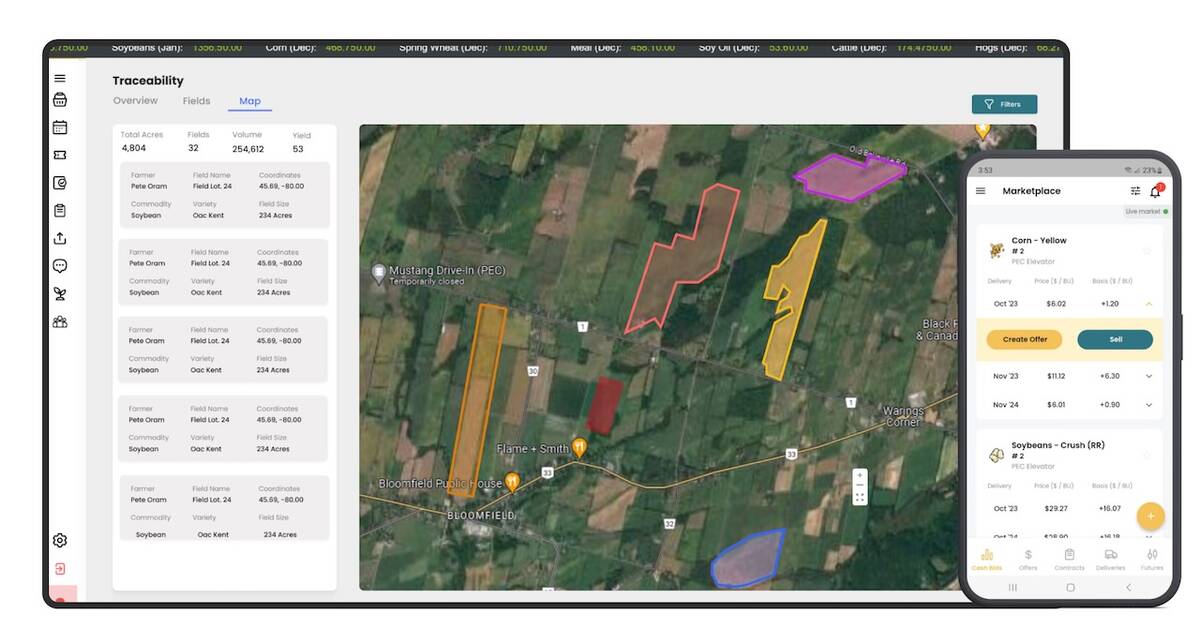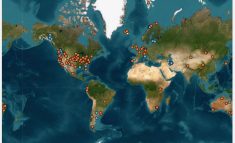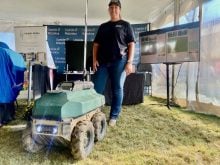Glacier FarmMedia – Increasing yields while decreasing reliance on fertilizers and inputs is a balancing act of doing more with less.
The good news is there are more farmers, agronomists, advisers and researchers measuring specific soil and plant needs, identifying what’s missing and recommending when and where to place inputs for maximum benefit.
The 2022 growing season was the first for a project studying mid-season tissue sampling in corn. Deveron, based in Chatham, joined four farmer collaborators and the Upper Thames Conservation Authority in the project, with A&L Canada Laboratories in London doing the tissue sampling.
Read Also

Ontario company Grain Discovery acquired by DTN
Grain Discovery, an Ontario comapny that creates software for the grain value chain, has been acquired by DTN.
Why it matters: A better understanding of how corn plants use nutrients could lead to more efficient use of inputs and boost yield.
“Interest was sparked in 2021 when deficiencies related to zinc were discovered at corn tassel,” says Danny Jefferies, precision agriculture specialist with Deveron. “The goal is to develop a protocol which delivers actionable insights resulting in yield and profitability increases for clients.”
The study aimed to benchmark early conditions and track responses from later treatments. As well, it aimed to better understand corn nutrient uptake timing and rates.
“We also wanted to be sure to have sampling just prior to VT (full tassel) timing to allow for evaluation of zinc uptake and capitalize on fungicide applications,” says Jefferies.
“The collaborators are top-end managers. All fields are well-tiled, well-managed for soil health with good background fertility.”
The process
Four samples were collected from each farm, from two locations in each field on June 13 (V5), June 27 (V7), July 11 (V10) and Aug. 24 (R4). Historical yield maps were used to select high-yielding and low- to medium-yielding areas, avoiding those with standing water or eroded knolls.
“We collected a baseline soil sample at the same time and location of our first tissue sample,” says Jefferies. “This provided us a measure of background fertility and we did multiple collections at each site, including a tissue and a sap test collection.”

For sap testing, they collected a sample from lower (older) leaves and upper (newer) ones, then evaluated tissue tests and made recommendations, including product applications.
Then they assessed uptake of nutrients using additional post-application tissue and sap tests, and found changes in those levels.
Another examination, requiring more in-depth study, relates to the choice of foliar products, including chelated and fulvic acids. Some collaborators also apply tank mixes with different adjuvants.
Careful collection
With mid-season testing, the key is to sample strategically and economically, ensure well-managed background fertility and then sample in multiple locations using satellite imagery or historical yield data.
The testing assessed macro- and micro-nutrients within the leaf. The sap test also provided analysis on sugars, pH and nitrogen conversion efficiency, illustrating the plant’s ability to convert nitrogen to amino acids and proteins. Researchers observed how nutrients behave once in the plant tissue.
“Boron, even though it’s mobile within the soil profile, is immobile within the plant,” says Jefferies. “We saw an uptick in boron levels post-application, but sampling a couple of weeks later, the levels were back down. The nutrient didn’t move to the new growth, illustrating the importance of hitting an ideal window for timing when the nutrient is most in need.”
Environmental issues, such as runoff and plants’ nutrient use efficiency, are of greater interest due to higher fertilizer and input prices plus government directives to mitigate climate change.
The conservation authority has been working with Deveron to examine the effect of cover crops from environmental, economic and agronomic perspectives.
“As we promote practices, we need to consider the impact to the whole farming operation,” says Tatianna Lozier, stewardship services co-ordinator with the authority.
“The economics of soil health, water quality or climate change practices continue to be at the forefront of conversations. Deveron staff has provided valuable insight into the data we collect, to answer questions about their fields and in analyzing the data.”
The conservation authority has participated in past studies on potential nutrient loss from stream vegetation or cover crops. For this project, it included tissue sampling based on recommendations from Deveron to check differences in crop yield from cover crop versus no cover crop trials.













